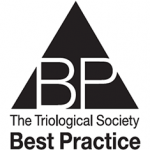Existing evidence suggests that olfactory training is a low-risk intervention that provides clinically relevant and sustained benefit in some PISL patients.


Existing evidence suggests that olfactory training is a low-risk intervention that provides clinically relevant and sustained benefit in some PISL patients.
Comparing two different treatmes of patients with squamous cell carcinoma of unknown primary to see the impact on survival rate.

There is evidence that steroid use may be beneficial to improve hearing preservation.
Recurrent respiratory papillomatosis continues to decline since the implementation of the HPV vaccination, and advancements show promise in RRP medical management.
The practice of neck drain insertions in patients undergoing thyroidectomies is associated with higher risks of hematomas and surgical site infections, and longer hospital stays.

Recent advances in intraoperative, near-infrared imaging technology may offer effective tools for surgeons to help avoid negative outcomes.
Transoral laser microsurgery is associated with better outcomes than radiotherapy in overall survival, confidence interval, disease-specific survival, and laryngeal preservation in patients with T1 glottic carcinoma.
A look at the impact of positioning or head manipulation during thyroid surgery on two different commercially available recording electrode arrays.
Endolymphatic shunt surgery provides successful vertigo control at least as well as ITG, with a lower incidence of audiovestibular complications
Olfactory fluctuation is mostly associated with sinonasal disease and elevated Sniffin’ Sticks scores, and its presence is valuable information when used in clinical context in a patient workup.